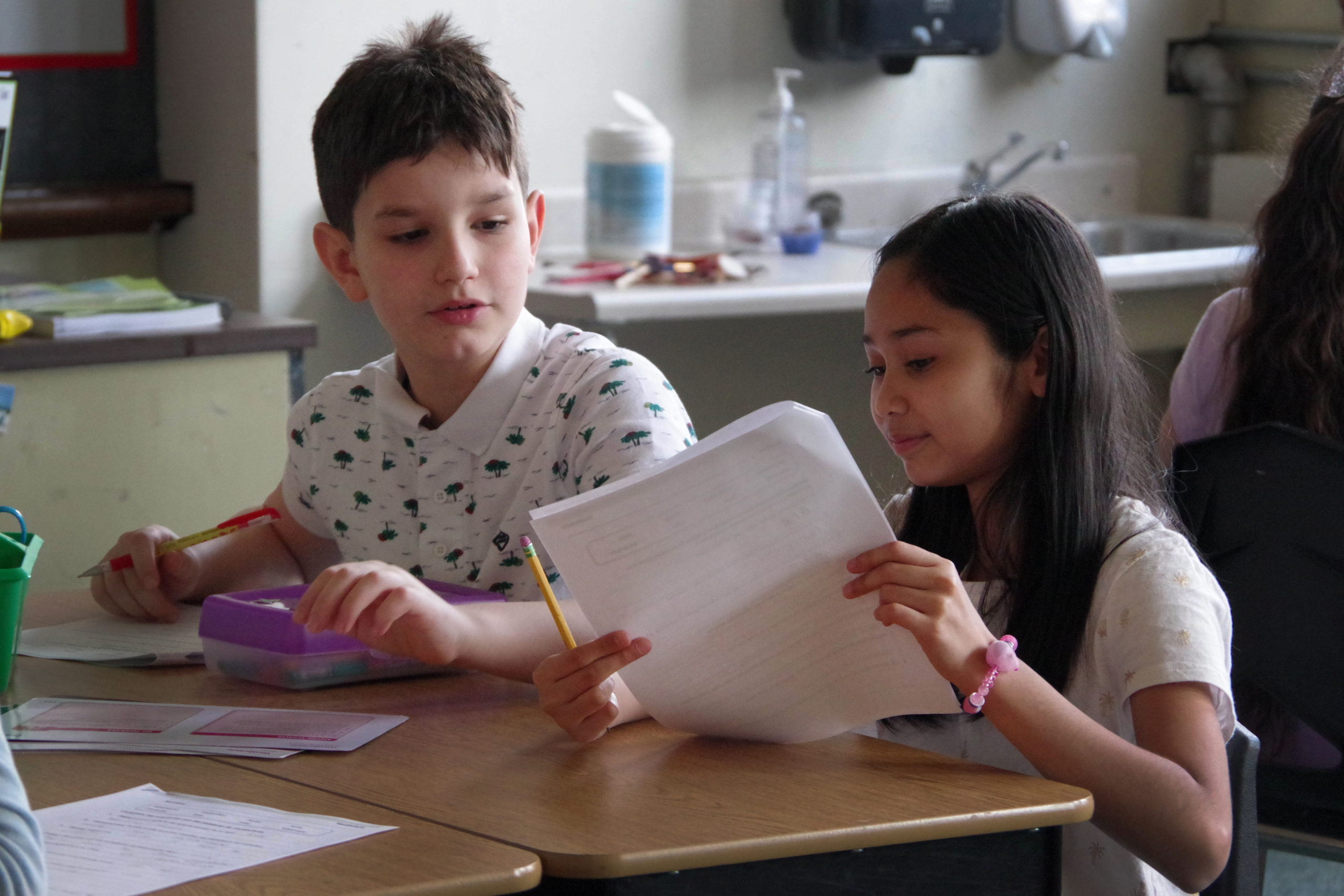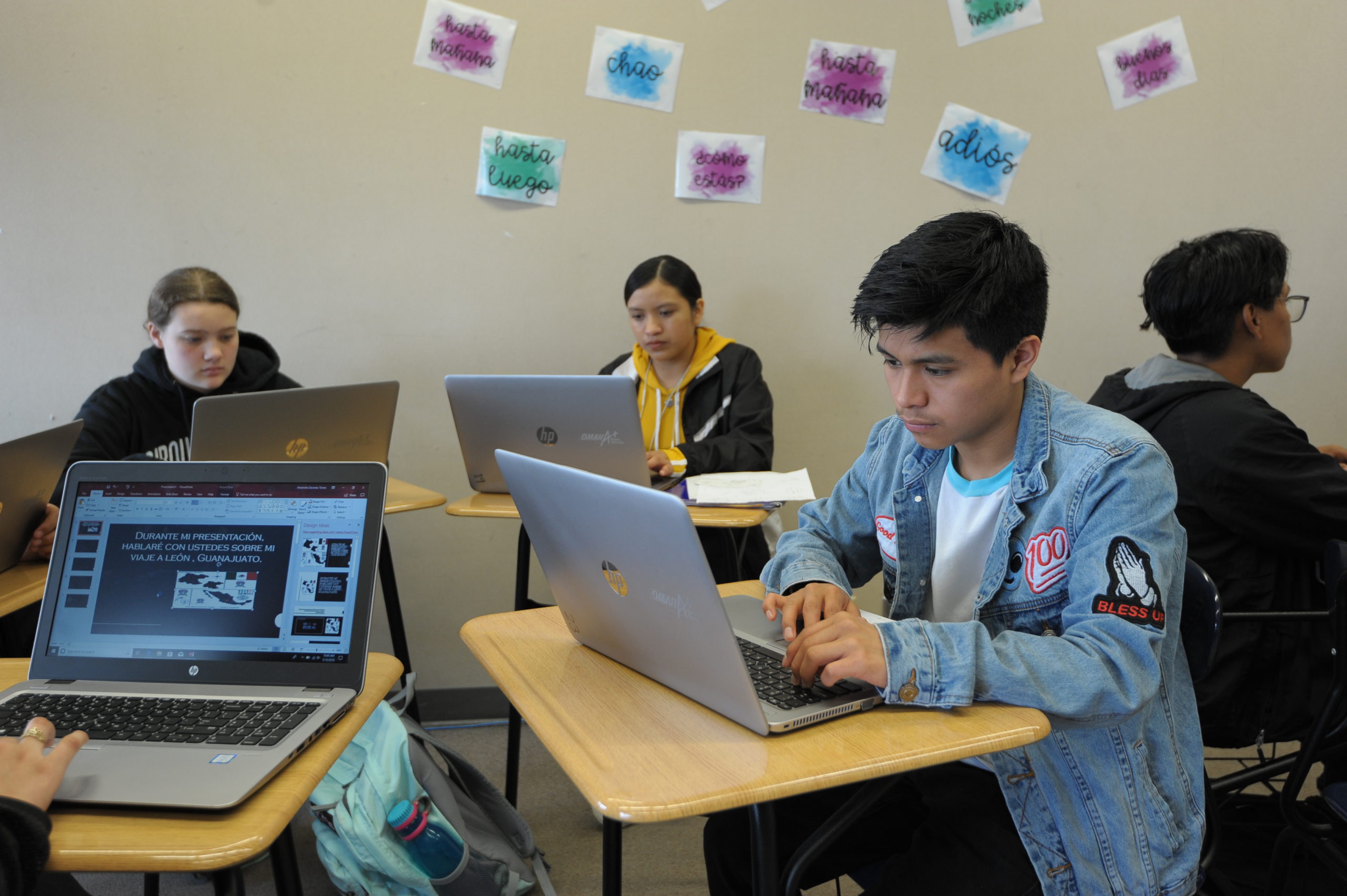When breaking down language barriers in schools, districts offering dual-language programs don’t always divide instruction evenly between the two languages. It’s also rare to find a 50-50 balance of English language learners and native English speakers in these classrooms. And sometimes, students have to apply to take part or participate in after-school or summer courses. Here’s how five districts tackle these issues to break down language barriers in education and to provide equity for English language learners.
1. Schaumburg School District 54 (Illinois)
Last year, more ELLs in this Illinois district met English proficiency standards than English language learners in any other system in the state. These K-8 students, who make up 57% of Schaumburg School District 54, participate in a biweekly writing assistance program after school.
Last year, ELLs in the program chose and researched their topics when, previously, teachers led the process. “By allowing this, students will take greater ownership and investment in the work,” says Danette Meyer, assistant superintendent of language and culture.
Related: Breaking school language barriers
In grades 1 and 2, the district is eliminating language barriers in education by having ELLs write about the life cycles of certain species, which capitalizes on students’ interest in animals.. Middle schoolers and high schoolers compare and contrast STEM careers. “This gives students the chance to see themselves in careers, such as food scientists or app developers,” says Meyer.
Other topics for various grades include the refugee crisis and immigration. “Our students are more highly engaged when learning about how the world works,” Meyer adds.
2. Valley View ISD (Texas)
The majority of Valley View ISD students speak Spanish as their first language. ELLs enroll in an all-day, transitional program at all five elementary schools in the Texas district near the Mexican border. As the program progresses, the use of Spanish decreases. Educators—who all have bilingual certification—usually begin the program teaching 75% of a class in Spanish. That percentage drops to 15%-25% by the end.
Students who complete the program enter mainstream classes taught completely in English.
“Students retain their native language with family and community interaction, but in school, it’s all in English at this point,” says Matthew Meyers, director of bilingual education.
Administrators expect ELLs who enter the program in kindergarten to transition to an all-English program by grade 5. Those who start later should gain proficiency by grade 7.
Mixed classes
To provide equity for English language learners, Most classrooms consist entirely of ELLs at the beginning of Valley View’s program. Native English speakers usually join by grade 4. “Second language learners generally take about five to nine years to become proficient in that second language, so we wait until we transition in our native English speakers so ELLs can learn from them,” says Meyers.
In preschool to grade 4, ELLs stay with one teacher throughout the day so they can receive one-on-one attention.
Afterward, a typical class splits students into two groups with a certified educator going back and forth between them. While the teacher leads one group, the other students work independently.
3. Metropolitan School District of Lawrence Township (Indiana)
 In this Indianapolis district, students interested in the all-day language immersion programs offered at two elementary schools have to apply. Two English educators and two Spanish teachers lead each class, into which ELLs and native English speakers are divided evenly.
In this Indianapolis district, students interested in the all-day language immersion programs offered at two elementary schools have to apply. Two English educators and two Spanish teachers lead each class, into which ELLs and native English speakers are divided evenly.
“The program meets a community need,” Chief Academic Officer Troy Knoderer says. “English speakers want to be fluent in Spanish, and Spanish speakers want to be fluent in English.”
Even though the program recently expanded, students may still end up on a waiting list of up to 100 applicants.
In response to a quickly growing ELL population, the Lawrence Township district created another dual-language program that doesn’t require students to apply.
Three elementary schools offer this program for K-2 students who speak Spanish as their first language.
In each class, one educator teaches 80% of the day in Spanish and 20% in English. “Research shows that the more you support a student in their home language, the better and more quickly they can learn a second language,” says Knoderer.
4. Holyoke Public Schools (Massachusetts)
Approximately 300 students in two elementary schools participate in Holyoke’s dual-language programs in Massachusetts. Joseph Metcalf and E.N. White elementaries add a new grade level to the program every year. Some 30% of the students identify as ELLs, while 40% speak a first language other than English.
At E.N. White, families who live in the school’s zone get priority when applying for the dual-language program, while students outside the boundary are entered into a lottery. Joseph Metcalf School automatically enters every applicant into its own program lottery.
The preschool has a 80% Spanish and 20% English model that switches to a 50-50 split in K-5. Joseph Metcalf will offer the program for preschool through fifth grade students beginning in 2019-20
“We wanted to give preschoolers a stronger foundation in Spanish since they are surrounded by English outside of school,” Principal Amy Burke says.
Preschool requires only one Spanish teacher. In K-5, each class is separated into two groups consisting of non-English and English speakers. These groups switch between rooms led by an English or Spanish teacher. “Ideally, you want a mixture of students in each group so kids can hear their role models in both classrooms,” says Anne Day, director of ESL and bilingual education.
5. Omaha Public Schools (Nebraska)
Omaha Public Schools currently offers a dual-language program in 10 elementary schools, three middle schools and one high school.
“Schools that offer these dual-language programs are located in areas that are densely populated with English language learners,” says Katy Cattlett, supervisor of dual and world languages.
For example, approximately 80% of the student population at Omaha South High Magnet School consists of ELLs.
Any student can participate in the 50-50 initiative, but schools provide equity for english language learners by giving priority to ELLs if space is limited. Additionally, newcomers who arrive in the U.S. with no English proficiency are automatically added to the program in second grade.










